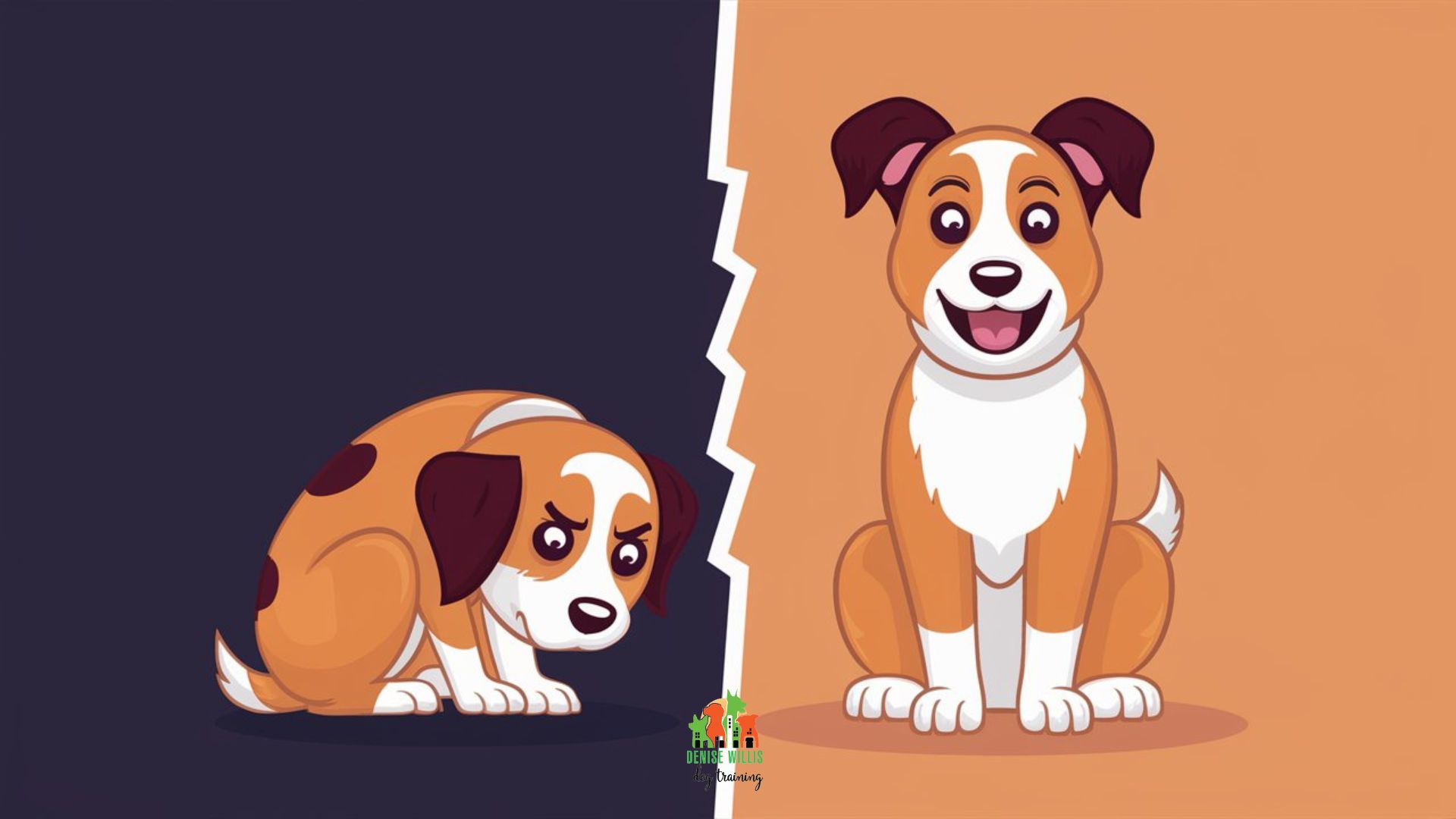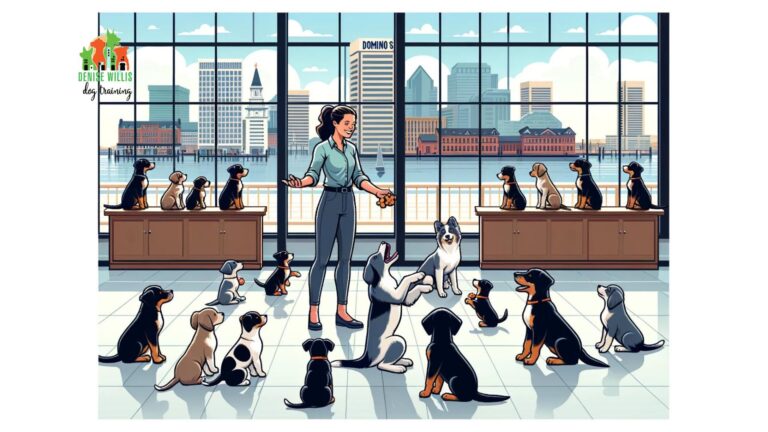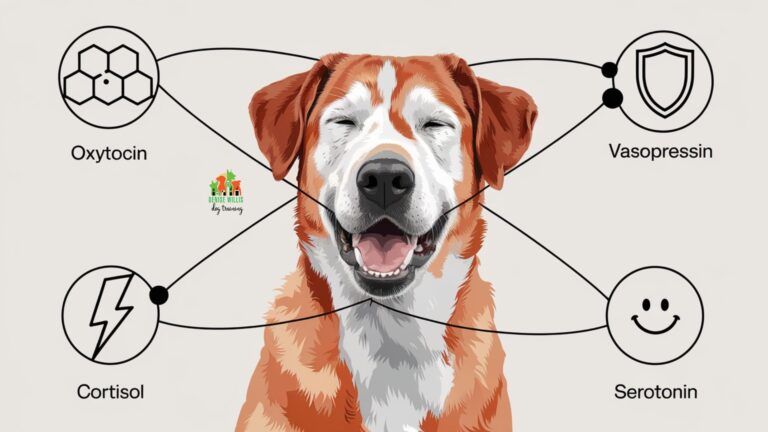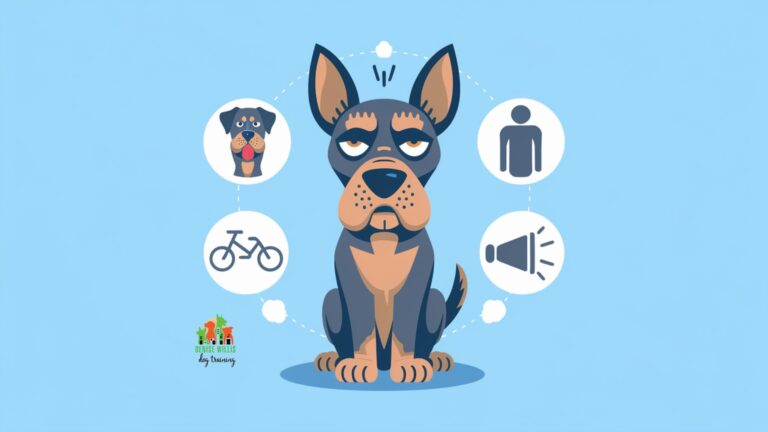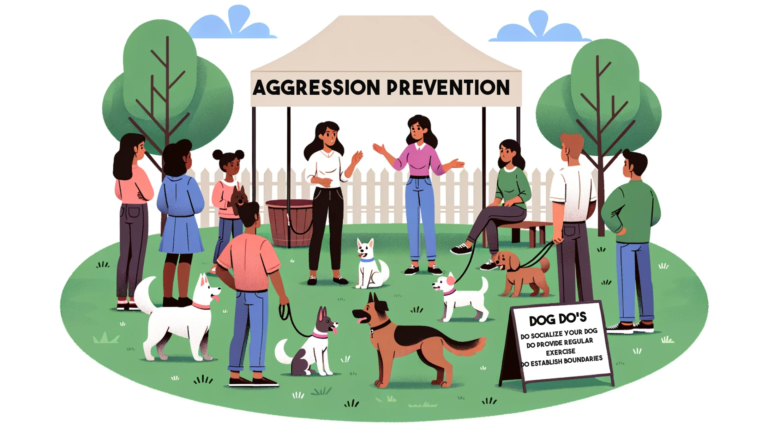From Wallflower to Social Butterfly: Socializing Your Fearful Dog
📍 Service Area Notice: DW Dog Training provides in-person training services exclusively in the Greater Baltimore area. While our blog content is designed to help dog owners internationally, our hands-on training services are locally focused. For readers outside our service area, we hope you find value in our articles and welcome you to reach out with questions!
Fearful dog socialization – sounds like a real pain in the tail, doesn’t it?
Trust me, I get it. As a professional dog trainer with decades of experience, I’ve seen more shaky pups than a San Francisco earthquake. But here’s the thing: that trembling terrier or cowering collie? They’re not destined for a life of hiding under the bed. With the right approach, even the most timid pooch can become a confident canine ready to take on the world (or at least the local dog park).
So, grab your favorite beverage (I won’t judge if it’s wine o’clock), and let’s dig into the nitty-gritty of turning your four-legged wallflower into the life of the puppy party. By the time we’re done, you’ll be armed with the knowledge to help your furry friend face their fears and maybe even make a few doggy pals along the way.
Key Takeaways
- Fearful dog socialization is a journey, not a sprint. Patience and consistency are your best friends.
- Understanding why your dog is scared is half the battle. Knowledge is power, folks.
- Creating a safe space for your pup is crucial. Think of it as their personal panic room, minus the panic.
- Positive reinforcement isn’t just for circus tricks. It’s your secret weapon in the socialization game.
- Gradual exposure is key. We’re talking baby steps, not giant leaps.
- Professional help isn’t admitting defeat. Sometimes, you need to call in the big guns.
- Socialization is a lifelong process. It’s not just puppy stuff.
Key Aspects of Socializing Fearful Dogs
Positive Reinforcement
Reward good behavior with treats and praise to build confidence.
Gradual Exposure
Introduce new experiences slowly and carefully to avoid overwhelming your dog.
Safe Space
Provide a comfortable retreat where your dog can relax and feel secure.
Consistency
Maintain a regular routine and training schedule to build trust and confidence.
Understanding Fearful Dogs
Ever wonder why your dog acts like the mailman is the grim reaper? Or why a simple walk in the park turns into a canine anxiety attack? Well, buckle up, because we’re about to take a deep dive into the world of fearful dogs.
Common Causes of Fear in Dogs
Dogs, like people, aren’t born afraid of the world. Something along the way taught them that the big, bad world is, well, big and bad. Here are some of the usual suspects:
- Lack of early socialization: If your pup didn’t meet enough friendly faces (both human and canine) during their critical developmental period, they might view new encounters as threat level midnight.
- Traumatic experiences: One bad run-in with an aggressive dog or a scary human can leave lasting scars. Dogs have long memories, especially for the not-so-good stuff.
- Genetic predisposition: Some dogs are just born a bit more nervous than others. It’s like they came from the factory with their anxiety dial turned up to eleven.
- Medical issues: Sometimes, what looks like fear is actually pain or discomfort. A dog with poor eyesight or hearing might startle easily, seeming fearful when they’re just confused.
Signs of Fear in Dogs
Now, you might think you’d recognize a scared dog when you see one. But fear isn’t always obvious. Here are some signs your pup might be feeling less than brave:
- Tail tucking: If your dog’s tail is so far between their legs it’s practically tickling their chin, they’re probably scared.
- Excessive panting: We’re talking more than just “I just ran a marathon” panting. This is “I think I’m about to be eaten” level heavy breathing.
- Avoiding eye contact: If your dog is doing their best to look anywhere but at the scary thing, they’re probably hoping it’ll go away if they ignore it hard enough.
- Trembling or shaking: Pretty self-explanatory. If your dog’s doing their best impression of a vibrating phone, they’re likely terrified.
- Trying to hide or escape: Whether it’s behind your legs or under the nearest piece of furniture, if your dog is trying to make themselves invisible, they’re scared.
- Freezing or becoming very still: Some dogs react to fear by becoming statues. If your usually bouncy pup suddenly turns into a furry statue, they’re probably scared stiff.
Understanding these signs is crucial. It’s like learning to speak “dog.” Once you can read these signals, you’ll be better equipped to help your furry friend navigate their fears.
The Socialization Timeline
Alright, pop quiz time: When do you think dog socialization starts? If you said “when I bring my new puppy home,” I hate to break it to you, but you’re already behind the curve. Let’s break down the socialization timeline, from newborn pup to seasoned senior.
Early Puppy Stage (0-8 weeks)
This is where it all begins, folks. From the moment those little furballs enter the world, they’re learning about their environment. During this time, puppies are like tiny sponges, soaking up everything around them. They’re learning from their mom, their littermates, and any humans they encounter.
- 0-2 weeks: At this stage, puppies are basically potatoes with legs. They can’t see or hear yet, but they’re already learning through touch and smell.
- 2-4 weeks: Eyes and ears open up, and the world gets a whole lot bigger. This is when puppies start to recognize their family members.
- 4-8 weeks: This is when the real fun begins. Puppies start playing with each other, learning bite inhibition, and figuring out doggy social cues.
Critical Socialization Period (8-16 weeks)
If the early puppy stage is the appetizer, this is the main course of socialization. This window of time is crucial for shaping your pup’s future behavior. It’s like their brain is a sponge, ready to soak up all sorts of new experiences.
During this time, you want to expose your puppy to as many positive experiences as possible. New people, other animals, different environments – the works. But remember, quality over quantity. One positive experience is worth a hundred neutral ones.
Here’s a quick checklist of things to expose your pup to during this time:
- Different types of people (tall, short, bearded, wearing hats, etc.)
- Other animals (dogs, cats, maybe even a friendly horse if you can swing it)
- Various surfaces (grass, concrete, wood floors, carpet)
- Different sounds (vacuum cleaners, cars, thunderstorms)
- New objects (umbrellas, bicycles, skateboards)
Remember, the goal here isn’t to overwhelm your pup. It’s to show them that the world is full of interesting, non-threatening things.
Juvenile Stage (4-6 months)
Congratulations! Your puppy is now a teenager. Okay, not quite, but they’re getting there. This stage is all about building on those early experiences and continuing to expose your pup to new situations.
During this time, your dog might go through a fear period. Don’t panic – this is normal. They might suddenly become wary of things they were fine with before. The key here is to remain calm and confident. Your pup will take their cues from you.
This is also a great time to start more structured training. Basic obedience, leash manners, and recall are all important skills to work on. Not only will this help with socialization, but it’ll also make your life a whole lot easier in the long run.
Adolescence (6-24 months)
Ah, the dreaded teenage phase. Just like human teenagers, adolescent dogs can be a handful. They might start testing boundaries, forgetting their training, or developing new fears.
During this time, consistency is key. Keep up with training and socialization efforts. Don’t let those hard-earned early lessons slip away. This is also a time when many dogs hit sexual maturity, which can bring its own set of challenges.
Remember, your once-fearless puppy might suddenly develop new fears during this time. Again, this is normal. The key is to address these fears calmly and positively, not to coddle or overreact.
Adult Dogs: It’s Never Too Late
So, you’ve got an adult dog who missed out on early socialization. Maybe you adopted an older dog, or perhaps life got in the way during those crucial early months. First things first: Don’t panic. While early socialization is ideal, it’s never too late to help a dog become more comfortable in the world.
With adult dogs, the process might be slower, and you’ll need to be extra patient. But with consistent effort and positive experiences, even the most fearful adult dog can learn to navigate the world with more confidence.
Remember, socialization isn’t just for puppies. It’s a lifelong process for dogs of all ages. Whether your dog is 12 weeks or 12 years old, there’s always room for growth and learning.
Dog Socialization Timeline
Early Puppy Stage
Puppies begin learning about their environment. They’re learning from their mother, littermates, and any humans they encounter.
0-8 weeks
Critical Socialization Period
This is the most important time for shaping a puppy’s future behavior. Expose them to various positive experiences with people, animals, and environments.
8-16 weeks
Juvenile Stage
Continue exposing your pup to new situations. This is a great time to start more structured training and work on basic obedience.
4-6 months
Adolescence
Dogs may test boundaries or develop new fears. Consistency in training and socialization is key during this period.
6-24 months
Adulthood
Socialization is a lifelong process. Continue to expose your dog to new experiences and reinforce positive behaviors.
2+ years
Key Strategies for Socializing Fearful Dogs
Alright, now that we’ve covered the “why” and “when” of socialization, let’s dive into the “how.” These strategies aren’t just theoretical mumbo-jumbo – they’re battle-tested techniques that I’ve used to help countless fearful dogs come out of their shells.
Creating a Safe Space
Every dog needs a place where they can retreat when the world gets too overwhelming. Think of it as your dog’s personal Fortress of Solitude. This could be a crate, a specific room, or even just a cozy bed in a quiet corner.
Here’s how to create a safe space for your fearful pup:
- Choose a quiet area: Pick a spot away from high-traffic areas of your home.
- Make it comfortable: Add soft bedding, a favorite toy, and maybe even an item of clothing that smells like you.
- Respect the space: Teach everyone in the household that when the dog is in their safe space, they should be left alone.
- Positive associations: Feed your dog treats in this space, or give them special chew toys that are only available there.
Remember, the goal isn’t to keep your dog in this space all the time. It’s to give them a place where they can decompress when they’re feeling overwhelmed.
Gradual Exposure and Desensitization
When it comes to socializing a fearful dog, slow and steady wins the race. Gradual exposure is all about introducing your dog to new experiences in a way that doesn’t overwhelm them.
Here’s a step-by-step approach:
- Identify your dog’s triggers: What specifically scares them? Other dogs? Loud noises? Men with beards?
- Start at a distance: Begin exposing your dog to the trigger from far away, where they notice it but don’t react fearfully.
- Reward calm behavior: Any time your dog looks at the trigger without reacting negatively, praise and treat them.
- Gradually decrease distance: Over time, slowly move closer to the trigger, always staying within your dog’s comfort zone.
- Take breaks: Don’t push too hard. Short, positive sessions are better than long, stressful ones.
Remember, the goal isn’t to eliminate fear overnight. It’s to gradually teach your dog that the scary thing isn’t so scary after all.
Positive Reinforcement and Counter-Conditioning
Positive reinforcement isn’t just for teaching tricks. It’s a powerful tool for changing how your dog feels about scary situations. The goal here is to create a positive association with things your dog currently fears.
Here’s how it works:
- Identify the trigger: Let’s say your dog is afraid of men with hats.
- Watch for the trigger: When a man with a hat appears in the distance, before your dog reacts…
- Start the party: Break out the high-value treats, play with a favorite toy, or do whatever your dog loves most.
- Stop the party: When the trigger disappears, the fun stops too.
Over time, your dog will start to associate the presence of men in hats with good things happening. It’s like doggy magic!
Confidence-Building Exercises
A confident dog is generally a less fearful dog. Building your pup’s confidence can go a long way in helping them face their fears. Here are some exercises to try:
- Trick training: Learning new skills boosts confidence. Plus, it’s fun!
- Nose work: Tapping into your dog’s natural scenting abilities can be a great confidence booster.
- Agility (even at home): Setting up a simple obstacle course can help your dog learn to navigate new challenges.
- Interactive toys: Puzzle toys that dispense treats can help your dog learn problem-solving skills.
Remember, the goal here isn’t perfection. It’s about giving your dog opportunities to succeed and learn that they can overcome challenges.
Managing the Environment
Sometimes, the best way to help your fearful dog is to control their surroundings. This doesn’t mean you’re avoiding the problem – you’re just setting your dog up for success while they learn to cope with their fears.
Here are some ways to manage your dog’s environment:
- Choose quiet walking routes: Avoid busy streets or dog parks if these are triggers for your pup.
- Use visual barriers: A covered crate or a tall ex-pen can provide security in new environments.
- Control greetings: Ask visitors to ignore your dog at first, letting your pup approach when they’re ready.
- Use calming aids: Things like pheromone diffusers or calming music can help create a more relaxing environment.
Remember, environmental management is a tool, not a permanent solution. The goal is to use these strategies while you work on desensitization and counter-conditioning.
Test Your Knowledge: Fearful Dog Socialization
Practical Tips for Socialization
Now that we’ve covered the big-picture strategies, let’s get down to the nitty-gritty. Here are some practical tips for socializing your fearful dog in different situations.
Socializing with People
For many fearful dogs, humans are public enemy number one. Here’s how to help your pup realize that people aren’t so bad after all:
- Start with the right people: Choose calm, dog-savvy folks who understand the importance of letting your pup approach them, not the other way around.
- Use the “no talk, no touch, no eye contact” rule: Ask people to ignore your dog at first. This takes the pressure off and lets your dog investigate at their own pace.
- Make it rewarding: When your dog does approach someone, make sure good things happen. Treats, praise, whatever your dog loves most.
- Practice with different types of people: Men, women, children, people in hats, people with beards – the more variety, the better.
- Don’t force it: If your dog isn’t ready to interact, that’s okay. Forced interactions can do more harm than good.
Remember, the goal isn’t for your dog to love every human they meet. It’s for them to feel comfortable and safe around people.
Socializing with Other Dogs
Dog-to-dog socialization can be tricky, especially if your pup has had bad experiences in the past. Here’s how to approach it:
- Choose the right playmates: Look for calm, well-socialized dogs to be your pup’s first friends. Avoid overly energetic or pushy dogs.
- Use parallel walking: Start by walking your dog parallel to another dog, with plenty of space between them. Gradually decrease the distance as your dog becomes more comfortable.
- Respect your dog’s boundaries: If your dog shows signs of stress, increase the distance or end the interaction. It’s better to have many short, positive interactions than one long, stressful one.
- Reward calm behavior: Any time your dog looks at another dog without reacting fearfully, praise and treat them.
- Consider group classes: A well-run training class can be a great, controlled environment for dog-to-dog socialization.
Remember, not every dog needs to be a social butterfly. The goal is for your dog to be able to calmly coexist with other dogs, not necessarily play with every dog they meet.
Exposure to Different Environments
The world is full of weird and wonderful sights, sounds, and smells. Helping your dog navigate new environments is a crucial part of socialization. Here’s how to do it:
- Start small: Begin with short trips to quiet, low-stress environments.
- Use the car as a safe space: If your dog is comfortable in the car, you can use it as a mobile safe space to observe new environments from a distance.
- Bring familiar items: A favorite toy or blanket can provide comfort in new places.
- Keep it positive: Bring high-value treats and make new experiences as fun as possible.
- Don’t push too hard: If your dog seems overwhelmed, it’s okay to cut the outing short and try again another day.
The goal here is to gradually expand your dog’s comfort zone, showing them that new places can be fun and rewarding.
Handling and Touch Desensitization
Many fearful dogs are sensitive to handling, which can make things like vet visits and grooming sessions a nightmare. Here’s how to help your dog become more comfortable with touch:
- Start slow: Begin with areas your dog is comfortable having touched, like their back or chest.
- Pair touch with treats: Every time you touch your dog, give them a treat. This creates a positive association with handling.
- Gradually expand: Slowly work up to more sensitive areas like paws, ears, and mouth.
- Practice vet-like handling: Get your dog used to things like having their temperature taken or lying on their side.
- Make it a game: Turn handling exercises into fun games like “paw” or “high five” to make the experience more enjoyable.
Remember, the goal isn’t just to make your dog tolerate handling, but to actually enjoy it. This can make a world of difference when it comes to vet visits, grooming, and everyday care.
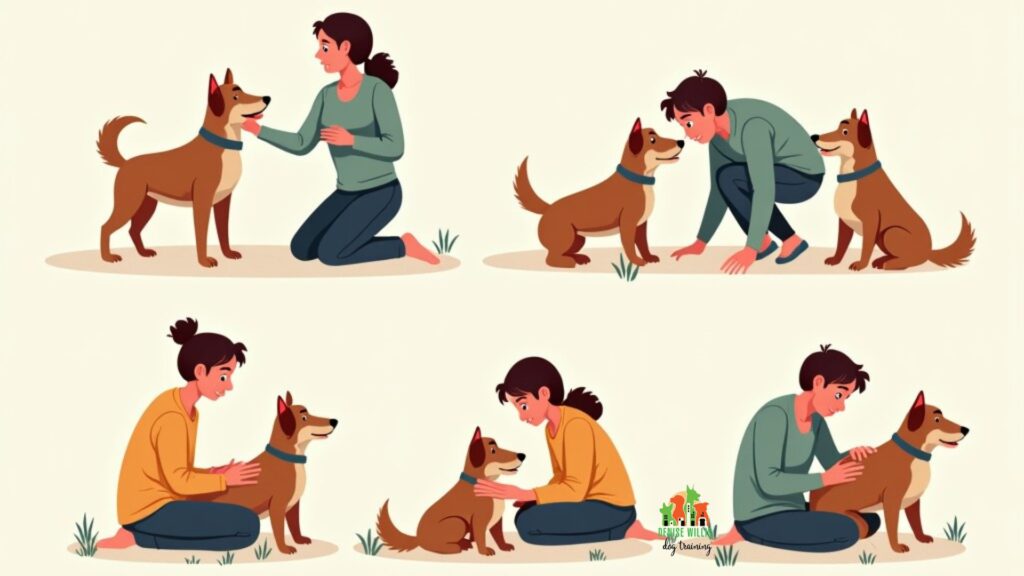
Common Challenges and Solutions
Let’s face it, socializing a fearful dog isn’t always a walk in the park (pun intended). You’re bound to hit some bumps along the way. But don’t worry – I’ve got your back. Let’s tackle some common challenges head-on.
Setbacks and How to Handle Them
Picture this: You’ve been making great progress with your pup. They’re finally able to walk past other dogs without freaking out. Then, out of nowhere, a off-leash dog charges at them, and suddenly you’re back to square one. Frustrating, right? Here’s how to handle setbacks:
- Don’t panic: Setbacks are normal. They’re not a sign of failure, just a part of the process.
- Identify the trigger: What caused the setback? Understanding the cause can help you prevent similar situations in the future.
- Go back a step: If your dog has regressed, simply go back to the last level where they were successful and work your way up again.
- Keep sessions short and positive: After a setback, focus on short, successful training sessions to rebuild confidence.
- Adjust your expectations: Remember, progress isn’t always linear. Two steps forward and one step back is still progress!
The key here is to stay patient and consistent. Rome wasn’t built in a day, and your fearful dog won’t become a social butterfly overnight.
Dealing with Specific Phobias
Some dogs have very specific fears. Maybe your pup is fine with most people, but loses their mind at the sight of a man in a hat. Or perhaps they’re cool with other dogs, but skateboards send them into a panic. Here’s how to tackle specific phobias:
- Break it down: If your dog is afraid of skateboards, start with just the board without wheels. Then add the wheels, but keep it stationary. Gradually work up to a moving skateboard.
- Use recordings: For fears of sounds (like thunderstorms or fireworks), start with low-volume recordings and gradually increase the volume over time.
- Dress-up time: For fears of specific types of people, enlist friends to help. Have them slowly add elements (like hats or sunglasses) while interacting positively with your dog.
- Create positive associations: Whatever the fear, pair it with something your dog loves. Scary thing appears, yummy treats rain from the sky.
- Consider professional help: Some phobias can be particularly tricky to overcome. Don’t hesitate to consult a professional trainer or behaviorist if you’re struggling.
Remember, the goal isn’t to eliminate the fear entirely (that’s often unrealistic), but to help your dog cope with it in a healthy way.
When to Seek Professional Help
Look, I get it. Asking for help can feel like admitting defeat. But here’s the thing: seeking professional help isn’t a sign of failure. It’s a sign that you’re committed to giving your dog the best possible chance at a happy, confident life. Here are some signs it might be time to call in the pros:
- You’re not seeing progress: If you’ve been working consistently for several weeks or months with no improvement, it might be time for a fresh perspective.
- The fear is severe: If your dog’s fear is so intense that it’s impacting their quality of life, professional help can make a world of difference.
- You’re feeling overwhelmed: Dealing with a fearful dog can be emotionally draining. If you’re feeling burnt out, a professional can provide support and guidance.
- The fear is dangerous: If your dog’s fear leads to aggressive behavior, it’s crucial to get professional help to ensure everyone’s safety.
- You’ve hit a plateau: Even if you’ve made progress, a professional can help you take your training to the next level.
Remember, working with a professional doesn’t mean you’ve failed. It means you’re smart enough to know when you need extra support. And trust me, your dog will thank you for it.
The Role of Health in Fear and Socialization
Now, I know what you’re thinking. “I thought we were talking about behavior, not health!” But here’s the thing: physical health and behavior are more closely linked than you might think. Let’s dive into how your dog’s health can impact their fear and socialization.
Ruling Out Medical Causes
Sometimes, what looks like fear or aggression can actually be a sign of pain or illness. Here’s why it’s crucial to rule out medical causes:
- Pain can cause irritability: A dog with undiagnosed joint pain might snap when approached simply because movement hurts.
- Thyroid issues can affect behavior: Hypothyroidism can cause lethargy, depression, and even aggression in some dogs.
- Vision or hearing problems can cause startle responses: If your dog can’t see or hear well, they might react fearfully to sudden movements or sounds.
- Neurological issues can affect behavior: Conditions like brain tumors can cause personality changes and increased anxiety.
- Gastrointestinal problems can cause irritability: A dog with chronic stomach pain might become snappy or withdrawn.
Always start with a thorough vet check-up when addressing behavior issues. You might be surprised how often solving a medical problem can improve behavior.
The Potential Use of Anti-Anxiety Medications
Now, I know what some of you are thinking. “Drugs? For my dog? No way!” But hear me out. In some cases, anti-anxiety medications can be a valuable tool in helping fearful dogs. Here’s what you need to know:
- It’s not a magic fix: Medication should always be used in conjunction with behavior modification, not as a replacement for it.
- It can help “take the edge off”: For some dogs, medication can lower their overall anxiety level, making it easier for them to learn and respond to training.
- It’s not forever: Many dogs only need medication temporarily, while they learn coping skills.
- There are different options: From SSRIs to benzodiazepines, there are various medications available. Your vet can help determine what’s best for your dog.
- It’s a personal decision: Medication isn’t right for every dog or every situation. It’s a decision to be made in consultation with your vet and behaviorist.
Remember, there’s no shame in using medication if it helps your dog. Just like we wouldn’t expect a person with clinical anxiety to just “get over it,” sometimes our dogs need a little extra help too.
Long-term Management and Ongoing Socialization
Alright, you’ve put in the work. Your once-fearful pup is making progress. Time to kick back and relax, right? Not so fast! Socialization isn’t a “one and done” deal. It’s an ongoing process that continues throughout your dog’s life. Let’s talk about how to keep those hard-earned social skills sharp.
Maintaining Socialization Skills
Think of socialization like a muscle. Use it or lose it! Here’s how to keep your dog’s social skills in top shape:
- Regular outings: Keep exposing your dog to new people, places, and experiences. Even if it’s just a walk down a different street.
- Playdates: If your dog enjoys the company of other dogs, regular playdates can help maintain those doggy social skills.
- Training classes: Even if your dog knows all the basics, advanced training classes can provide mental stimulation and socialization opportunities.
- Be proactive: Don’t wait for problem behaviors to crop up. Regularly practice and reinforce good social behaviors.
- Keep it positive: Always make sure social interactions are rewarding for your dog. The goal is for them to view new experiences as fun, not scary.
Remember, every positive experience builds your dog’s confidence and reinforces good behavior.
Adapting to Life Changes
Life doesn’t stand still, and neither should your socialization efforts. Major life changes can impact your dog’s behavior and trigger new fears. Here are some situations to watch out for:
- Moving to a new home: New sights, sounds, and smells can be overwhelming. Take it slow and give your dog time to adjust.
- Adding a new family member: Whether it’s a new baby or a new pet, gradual introductions and positive associations are key.
- Changes in routine: Dogs thrive on routine. If your schedule changes (like going back to work after working from home), help your dog adjust gradually.
- Health changes: As dogs age, they may develop new sensitivities or fears. Stay attuned to your dog’s changing needs.
- Environmental changes: Construction in the neighborhood or changes in local wildlife can impact your dog’s comfort level during walks.
The key is to be proactive. When you know a change is coming, start preparing your dog in advance. And always be ready to revisit your socialization efforts if new fears crop up.
Educating Family Members and Visitors
You’ve put in the work to help your dog feel more comfortable in the world. But all that hard work can go out the window if well-meaning family members or visitors don’t understand how to interact with your pup. Here’s how to get everyone on the same page:
- Set clear rules: Establish guidelines for how people should interact with your dog. For example, no forced petting or picking up without permission.
- Educate about body language: Teach family members and regular visitors how to read your dog’s body language. A wagging tail doesn’t always mean a happy dog!
- Empower your dog: Teach visitors to let your dog approach them, not the other way around. This gives your dog control over the interaction.
- Manage greetings: For very fearful dogs, it might be best to have visitors ignore the dog completely at first. Let your dog decide when they’re ready to interact.
- Be your dog’s advocate: Don’t be afraid to speak up if someone is interacting with your dog in a way that makes them uncomfortable. Your dog is counting on you to keep them safe.
Remember, consistency is key. The more consistent the people in your dog’s life are, the more confident and comfortable your dog will feel.
Product Recommendations For Socializing Fearful Dogs
Now, I’m not one for quick fixes or miracle products. But I’d be lying if I said there weren’t some tools out there that can make your life (and your dog’s) a whole lot easier when it comes to socialization. Here’s a rundown of some products that might help:
- ThunderShirt: This pressure wrap can help calm anxious dogs. It’s like a constant hug for your pup.
- Puzzle toys: Mental stimulation can help reduce anxiety. Toys like the Kong Classic or Nina Ottosson puzzles are great options.
- Adaptil Collar: This collar releases calming pheromones that can help reduce stress in some dogs.
- Calming treats: Products like Zesty Paws Calming Bites can take the edge off in stressful situations.
- Long leash: A 15-30 foot leash can be great for allowing your dog to explore at a distance while still maintaining control.
Remember, these products are tools, not solutions. They work best when used in conjunction with training and behavior modification. Always consult with your vet or a professional trainer before introducing new products, especially calming aids or supplements.
Further Reading
Want to dive deeper into the world of dog behavior and training? I’ve got you covered. Here are some articles that can help you on your journey to socializing your fearful dog:
- 10 Essential Tips for Socializing Your Puppy and What Not to Do: This article is a great starting point if you’re new to the world of dog socialization.
- How to Help Your Scaredy Dog: 6 Common Dog Phobias and Their Solutions: Dealing with specific fears? This article breaks down common phobias and how to address them.
- The Shy Dog’s Guide to Conquering Fear: 10 Simple Techniques: Perfect for those looking for practical, step-by-step techniques to help their shy dog.
- Decoding Your Dog: 15 Body Language Signals You Need to Know: Understanding your dog’s body language is crucial in socialization. This article will help you become fluent in “dog”.
- Transforming Your Rescue Dog’s Behavior: Adopted a fearful rescue? This article offers specific advice for helping rescue dogs overcome their pasts.
These articles dive deeper into specific aspects of dog behavior and socialization. They’re great resources to complement what you’ve learned here about fearful dog socialization.
Key Terms in Dog Socialization
Final Thoughts
Whew! We’ve covered a lot of ground, haven’t we? From understanding why your dog might be fearful, to practical strategies for socialization, to long-term management – we’ve been through it all.
Remember, socializing a fearful dog isn’t a sprint, it’s a marathon. There will be good days and bad days, progress and setbacks. But with patience, consistency, and a whole lot of love, you can help your furry friend become more comfortable and confident in the world.
If you’re feeling overwhelmed, or if you’re not seeing the progress you hoped for, don’t hesitate to reach out to us at DW Dog Training. We’ve been in the trenches with countless fearful dogs, and we’d be honored to be part of your pup’s journey to confidence. Contact us for personalized advice and support.
Now, I’d love to hear from you. How has your experience been with socializing a fearful dog? What challenges have you faced? What victories, no matter how small, have you celebrated? Drop a comment below and share your story. Your insights could be just the thing another dog parent needs to hear.
Remember, every dog’s journey is unique, but with the right approach, even the most fearful dog can learn to navigate the world with more confidence. You’ve got this, and we’ve got your back. Let’s turn those trembles into tail wags, one positive experience at a time!

